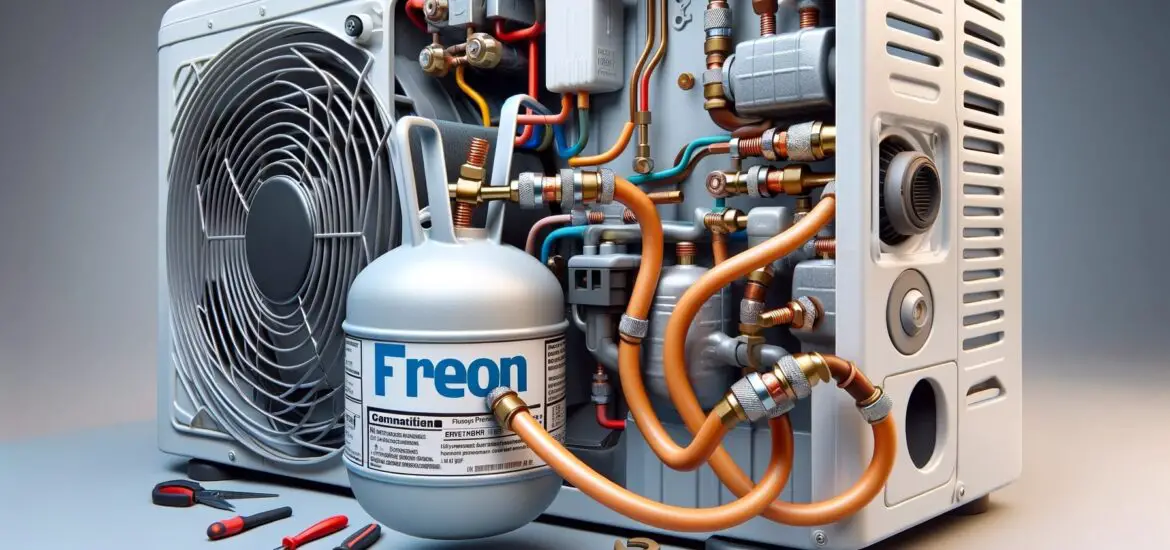If your freon hose won’t fit, this comprehensive guide is designed to help you understand and resolve this common problem.

Table of Contents
Understanding the Basics of Freon Hoses
Freon hoses, integral to your air conditioning (AC) system, are specifically designed to handle the transportation of refrigerant, commonly known as freon. This refrigerant is a chemical compound that transitions between liquid and gas states within the AC system. It enables it to absorb heat from your indoor environment and release it outdoors, thus cooling your space.
Freon hoses are constructed from durable materials like reinforced rubber and metal. As a result, it can withstand the high pressures and temperature variations associated with refrigerant flow.
A proper understanding of these hoses includes recognizing their role in the cooling cycle and their material composition. The stress they endure in normal operations is also important to understand. An improper hose fit can lead to refrigerant leakage, inefficient cooling, and potential damage to the AC system.
Identifying the Problem
When a freon hose doesn’t fit, it’s crucial to methodically identify the cause. This issue can arise due to several factors. This includes incorrect hose type, size mismatch, damaged threads, or physical deformities in the hose or connector.
Begin by examining the hose for compatibility with your specific AC model – different systems may require different hose types. Using an incompatible hose can lead to fitting problems.
Next, closely inspect both the hose and connector threads for wear and damage. Threads that are stripped, corroded, or misshapen can prevent a secure connection.
Also, check for any physical deformities, such as bending or kinking in the hose. These can obstruct proper alignment and connection.
Choosing the Right Size
Selecting the correct hose size is critical. A mismatch in size not only impedes the fitting process but can also lead to dangerous pressure build-up or leaks.
To determine the correct hose size, first, consult your AC unit’s manual for hose specifications, which typically include diameter and length. If the manual is unavailable, look for a model number on your AC unit and search online for the specifications.
When measuring the diameter of your AC unit’s connector, use a caliper for precise measurement. Remember that hose sizes are often specified in inches or millimeters. So use the appropriate unit of measurement.
After obtaining the measurements, purchase a hose that precisely matches these dimensions.
Inspecting for Damage
A thorough inspection for damage is crucial in solving fitting issues. Examine the hose for any visible signs of wear, such as cracks, brittleness, or areas where the rubber has become hardened or discolored, indicating degradation.
Also, inspect the metal components for signs of corrosion or rust. Pay special attention to the hose ends where they attach to connectors. These areas are prone to wear and damage.
Similarly, inspect the connector on the AC unit for any damage. Look for bent metal, cracks, or any debris that might obstruct a clean connection. Replace any components that show significant wear or damage, as compromised parts can lead to system failures or refrigerant leaks.
Proper Alignment Techniques
Correct alignment is essential for a secure hose connection. To align the hose properly, first, ensure it is at room temperature. This is important as temperature can affect the flexibility of the material.
Begin by gently aligning the hose with the connector, ensuring that it is straight and not angled or twisted. Slowly and carefully push the hose onto the connector. Be careful not to apply excessive force that could damage the hose or the connector.
If resistance is met, do not force the connection. Instead, recheck the alignment and ensure there is no debris or damage causing obstruction. Remember, forcing a connection can lead to damage and is a common mistake made during AC maintenance.
Seeking Professional Help
If you’ve tried all the above steps and the hose still won’t fit, it’s advisable to consult with a professional. A certified HVAC technician can provide a more thorough inspection.
They can also help resolve complex issues that might not be apparent to the untrained eye. Finally, they can advise if the issue is with the hose itself or a more significant problem within the AC system.